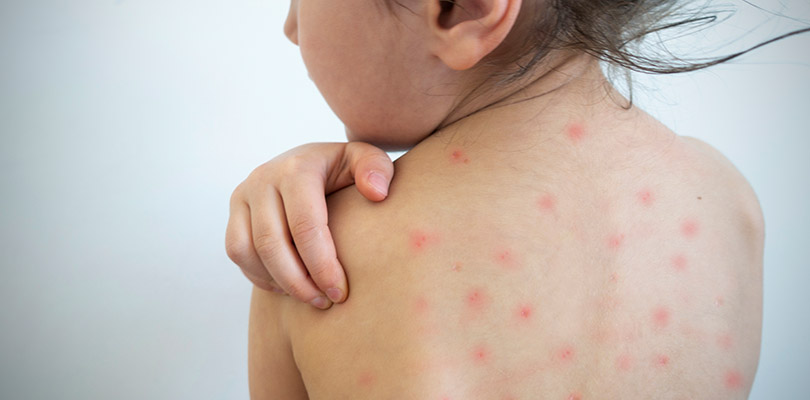Measles Symptoms to Be Aware Of
Though there is a lot of disagreement and strong feelings about vaccinations, everyone can agree that measles is a growing problem worldwide. Measles, the condition that was once nearly extinguished, is resurging with outbreaks in various countries.
Prevention is key to avoiding the measles, but knowing the signs and symptoms of the condition can help you seek immediate treatment when a loved one becomes infected. With measles, quick action can avoid dangerous outcomes.
The most common symptoms of measles include:
No Symptoms
You may not think that "no symptoms" is a sign of measles, but you would be wrong. Someone could be infected with measles for up to 14 days and show no outward effects from the virus.
The person could continue with their daily routines and behaviors while being unaware that the infection is taking hold. With enough time, the infection builds in the body and prepares to show outward signs.
If you know you or a loved one has been exposed to someone with the infection, it is just a matter of waiting until symptoms appear. Anytime there is a chance of contact with someone with the measles. You should consult with your doctor immediately.
High Fever
When measles symptoms present, they may trigger a high fever, which could be the first sign that something is wrong. This fever may seem similar to others caused by infections, or it could feel different.
The fevers associated measles can be quite scary. Measles fevers can spike to over 104 degrees while being hard to manage and lower.
Be sure to follow your doctors' recommendations on ways to treat and break the fever. Do not just jump into an ice bath without seeking a professional opinion as options like that can worsen the situation.
Cold-Like Symptoms
Along with the fever, the other early measles symptoms present as symptoms more closely linked to the common cold than measles. Someone with the measles could have:
- Cough
- Runny nose
- Sore throat
- Red, watery eyes or pink eye
These symptoms do not usually create a high level of worry or concern, but they are only an early sign of measles. Although the fever can be dangerous, these symptoms are more of an annoyance.
At this point, people may be unaware their symptoms are due to the measles virus. They mistakenly think they have a cold, which could delay their interest in seeking helpful treatments.
Koplik Spots
Real worry may begin between two and three days after symptoms start. Instead of symptoms alleviating and responding better to treatments, new symptoms emerge.
There are a number of effective treatments for acid reflux. Let’s take a look at some of the best acid reflux treatment options and how they work.
Within three days of the fever and cold-like symptoms starting, a person will display Koplik spots. Koplik spots are tiny, white dots that appear inside the mouth. They commonly surface on the roof of the mouth towards the uvula or the inside of the cheeks.
Koplik spots are not usually a problem by themselves, but they do send the signal that this is no mere cold or virus infection. These spots are directly linked to the measles.
Measles Rash
After the Koplik spots, the final measles symptoms begin. About three to five days after the first measles symptoms present, the measles rash forms.
Nearly three weeks from the initial exposure, the infected person will notice red spots appearing on around their hairline before spreading down their face. In time, the spots will move lower to the body, arms, legs, and feet.
Eventually, the spots will fuse to form a complete red patch from head to toe. Many times, small bumps will cover the red spots.
The rash shows the progression of the virus. The time when the outbreak shows is especially dangerous because it is another time with a risk of fever.
Just like in the earlier days of measles, the fever linked to the rash could reach hazardous temperatures. During this stage, fevers reaching over 105 degrees are common.
Contagiousness
One of the most important symptoms of measles is the contagiousness of the condition. With the measles, being highly contagious is a significant symptom that affects treatment and recovery.
The contagious period connects to the measles rash. The total communicable period lasts for about eight days, four days before the rash appears and four days after the rash appears.
Measles Treatment
Unfortunately, there are not a lot of treatment options for someone with measles. Doctors may recommend fever reducers, antibiotics, and vitamin A to limit symptoms or prevent other complications.
The crucial period comes between exposure and first symptoms. If you or a loved one has been recently exposed to measles, your doctor can offer a post-exposure vaccination. The vaccination may not prevent measles symptoms, but it could reduce them.
People at higher risk, like pregnant women, small children, those with weak immune systems, can receive immune serum globulin. This injection of antibodies can help treat symptoms if given within six days of exposure.
The measles is making a deadly comeback. Be sure to have the best information about symptoms and treatments to keep yourself, your family, and your community safe.







